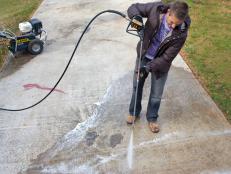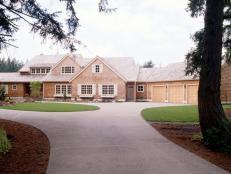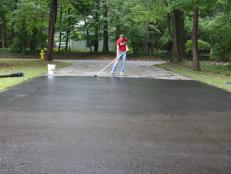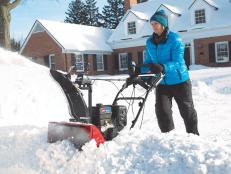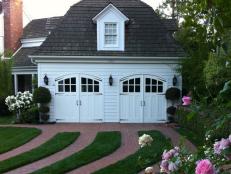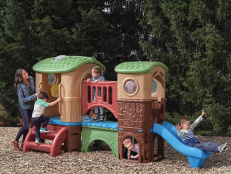Porous Pavement
Using porous pavement for a home's driveways, walkways and patios has numerous benefits for the environment. For one, it helps recharge groundwater by allowing rain and snowmelt from paved surfaces to percolate into the soil. Porous pavement also reduces stormwater runoff and the contaminants that runoff carries. Further, the water that is absorbed into the soil is of a higher quality because porous pavement systems filter some pollutants out of the water before it's absorbed.
Builders and homeowners can benefit from using porous pavement, too. Builders can realize cost savings because porous pavement systems integrate a sub-surface base reservoir to store and transmit water, eliminating the need to build detention basins. Homeowners benefit because porous pavement provides an attractive, cost-effective and green alternative for the home's outdoor hardscape surfaces.
Porous pavement options for residential use include porous aggregate, open-jointed blocks, pervious concrete and porous asphalt. Regardless of the porous pavement used, all systems have these three components: the subgrade, a base course and a surface course.
- Subgrade. The subgrade is the bottom layer. To create it, the ground is excavated to a level surface and is not compacted. This allows water to distribute and infiltrate evenly over the entire area. During construction, it's important to avoid compacting this area, because compaction will prevent infiltration. Also, the subgrade cannot be fill material unless the fill material is stone.
- Base course. The base course, directly above the subgrade, is a bed of uniformly graded and clean-washed aggregate. It adds structural thickness over the subgrade, stores and transmits water and serves as a rooting zone for trees. The base-course thickness, which is calculated per installation, disperses the loads above, compensates for wet or uncompacted subgrade and counteracts heaving pressure. In certain soil conditions, the base course may contain a discharge pipe for lateral overflow. Also, a filter fabric typically is placed beneath the base course to screen out fine soil particles.
- Surface course. The surface course is the porous aggregate, open-jointed blocks, pervious concrete or porous asphalt that makes up the hardscape and allows water to penetrate. It’s installed directly over the base course.
The keys to the long-term success of porous-pavement systems are correct design, successful installation and proper maintenance. Design for the system is site-specific and must take into account soil conditions, climate, topography and type of use planned for the porous pavement, including loads and frequency of use. Installation practices must be clearly specified and communicated to the installers, and strict supervision throughout the project is highly recommended. Failures of porous systems are typically are the result of incorrect installation.
Ongoing maintenance is important to promoting maximum water flow-through and the longevity of the system. A proper maintenance plan for open-jointed blocks, pervious concrete and porous asphalt should include regular execution of the following steps:
- Inspecting. Look carefully at the pavement several times during the first few months after installation for visible problems. Thereafter, conduct annual inspections, especially after big storms, when clogging of the surface course would be most obvious.
- Cleaning. Vacuum sweep the porous pavement two to four times a year and then pressure-wash it with water to keep the pores in the surface course from clogging. Eliminate spot clogging by drilling 1/2-inch holes through the surface layer every few feet throughout the clogged area.
- Patching. Fill potholes and cracks with patching mixes. If more than 10 percent of the surface area needs repair, further investigation and possible reconstruction may be needed.
If the surface layer is porous aggregate, it requires minimal maintenance. Aggregate that’s been displaced or compacted by vehicles or snowplows can be loosened and leveled with a rake. If traffic has crushed aggregate into fine particles or it has been pushed off a driveway, the aggregate should be replaced. Some aggregate surfaces may require weeding.
To learn more about Porous Pavement, visit:
See also: Porous Pavements (Integrative Studies in Water Management and Land Development), by Bruce K. Ferguson (2005).







